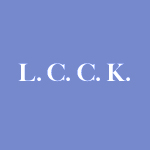
L. C. C. Krieger was the creator of the finest series of watercolor paintings of the fleshy fungi yet produced in America. The late D. G. Llyod said of his work “Such perfection of illustration has never been reached by anyone else in this country and in Europe only by Boudier. There may never be another as competent as he.” Not only do Kriegar’s plates approach perfection artistically, but they are technically correct as well to the most minute detail, a rare but much desired combination. In his zeal to perfect his mushroom paintings he acquired by long hours of patient study an astonishing knowledge of the larger American fungi, Boletus in particular, and of the pertinent literature.
Louis Charles Christopher Krieger was born in Baltimore, Maryland, February 11, 1873, the son of Henry and Katherine Lentner Kriegar. His early education was obtained in the public and parochial (Lutheran) schools of his native city. His artistic capabilities were early apparent, and at the precocious age of 13 he was enrolled at the Maryland Institute School of Art and Design. Later his studies were continued at the Charcoal Club School of Fine Arts. His association with the latter institution continued through out most of his life, and, in fact, such was his intimate connection with the Club, that his friends often referred to him as Louis “Charcoal Club” Krieger.
As a youth of 18 Krieger received his first appointment in the Department of Agriculture as an artist assistant, assigned to the Division of Microscopy. This was an interesting organization, the technical staff of which consisted of Dr. Thomas Taylor alone, who, since 1871 had been dabbling in all manner of activities involving the microscope and acting as his own artist.
At this time Dr. Taylor’s chief hobby was the mushrooms, and his new staff member was put to work painting those found in and about the District of Columbia, and in copying certain of the plates from European works. Several of these early plates by Krieger appear in the Microscopist’s report for 1893, and a number of others are in the files of the Mycological Collections of the Bureau of Plant Industry. During this period the young artist carefully saved the greater part of his annual stripend of $1000, being aided and abetted therein by his parents who permitted him to live at home in Baltimore without charge for board or lodging, though it is recorded that difficulties were encountered in getting the young commuter up and away, particularly on cold winter mornings.
The Hon. J. Sterling Morton, Secretary of Agriculture, dropped the entire division on June 30, 1895, for the reason that its activities overlapped those of other divisions. Another position would have been found for Krieger, since his talents were recognized, but he preferred to seize the opportunity for a long planned period of foreign study. Accordingly he spent the year 1895-96 at the Royal Bavarian Academy of Fine Arts in Munich where he industriously applied himself to the work in hand, not overlooking, however, the splendid opportunities then afforded in the same city to the music lover. Following his return to America he was for some years an instructor of drawing and painting at the Baltimore institution where he had obtained his early training. He also established himself as a portrait painter, but although several portraits were executed successfully, he found it rather dull and welcomed the opportunity offered in 1912 to become mycological artist to Prof. Farlow of Harvard University.
During the ten year period that ensued, he gave himself whole-heartedly to the study of the fleshy fungi and to their accurate portrayal in color, under Dr. Farlow’s immediate and sympathetic guidance. He worked for the most part in the famous library which adjoined Prof. Farlow’s home in Cambridge, but also spent much time at Cocorua, New Hampshire, the Farlow summer home, a well known spot mycologically. Several hundred plates now in the collections of the Farlow Herbarium attest his artistic ability and technical accuracy. Some 24 of these plates were issued in 1929 as part of the posthumous volume edited by Dr. Burt, Icones Farlowianae, the exact plates involved being listed by Krieger under this reference in the bibliography of his Popular Guide to the Higher Fungi of New York. It was during this time also that he commenced the indexing of the world’s literature of the larger fungi to which task he devoted most of his leisure hours for more than thirty years. His recreation while a resident of Cambridge was the Boston Symphony Orchestra and other local musical organizations. He not only enjoyed the musical performances of others, but was himself a skilled pianist and violinist and a great lover of Beethoven, Bach, and other composers of symphonic music.
Leaving Dr. Farlow’s service late in 1912, to again accept employment with the United States Department of Agriculture, Krieger was assigned to the Plant Introduction Garden at Chico, California. Here under the direction of the late David Griffiths he painted a remarkable series of pictures of the innumerable species and forms of the Cactus family assembled by Griffiths in connection with his studies of the forage possibilities of the prickly pears. These plates, largely unpublished, are deposited in the National Herbarium of the Smithsonian Institution, as part of the Griffiths’ collections.
Although Krieger developed a great admiration for David Griffiths and came to like Chico and its environs, the mushrooms were his first love, and he enthusiastically welcomed the invitation of Dr. Howard A. Kelly, of Baltimore, to resume his study and portrayal of these interesting plants. He took up his work with Dr. Kelly in December 1918, and during the ensuing ten years painted a second superb series of mushroom plates and continued intensive efforts to make his index comprehensive. It was during this, the halcyon period of his career, that he prepared and published most of his technical papers which appeared in Mycologia and other scientific journals. Prominent among them was the article Common Mushrooms of the United States in the National Geographic Magazine of May 1920 which was illustrated by 16 of his own colored plates. This article attracted widespread favourable comment from mycologists and laymen alike, and it is still a “best seller” with bookdealers who handle the Geographic. Another extremely interesting and instructive paper was his history of mycological illustrations which attested not only his ability as a critic of mycological illustration, but his knowledge of the literature. Other papers described and discussed new or rare agarics and other fungi encountered among the many species collected as “models” for his plates. A number of popular articles contributed to the Baltimore papers testified to the breadth of his interests.
Not the least of his activities was his assistance to Dr. Kelly who was interested during this time in building up what became within a few brief years one of the finest private mycological libraries ever assembled. It included an excellent set of Saccardo’s Sylloge Fungorum, a volume of original colored illustrations by Schweinitz, and many other fine items to a total of over 10,000. Krieger’s work with this library was climaxed by his detailed and accurate catalogue of it, published by Dr. Kelly in 1924.
In 1928 Dr. Kelly decided the time has arrived to deposit his mycological library and fungus collections, including the Krieger paintings in an institution where they would be safely housed and readily available to use. The University of Michigan was selected and the transfer made under the direction of the late C. H. Kauffman where in accordance with Dr. Kelly’s wish the collection was named “The L. C. C. Krieger Mycological Library,” and Krieger was appointed Honorary Curator. His connection with Dr. Kelly ceased at this time, but it must be noted that the latter continued his friendship with him, and aided him in many ways during his later years.
Krieger served briefly in 1928-29 with the Tropical Plant Research Foundation in Cuba where with his usual skill he made a series of paintings of sugar cane diseases, several of which were published. Returning from his Antillean adventure through the interest of Dr. Kelly he became Mycologist to the New York State Museum at Albany, his primary objective being the preparation of a manual of the higher fungi of New York State to be illustrated in part by some of his own paintings. He undertook the task with his usual enthusiasm and within a year prepared the manuscript and illustrations of the volume which after a long unaccounted for delay was issued in 1935 by the New York State Museum. This book was well written, carefully illustrated, and scientifically accurate and is one of the most satisfactory of the popular mushroom manuals ever issued in this country. It brought him many favourable comments although his satisfaction in his work marred by the fact that the originals of the plates for which he felt responsible were lost or destroyed through the negligence of others.
For the third time Krieger entered Government service in 1929, largely as a result of the interest taken in him by his old friend, David Griffiths, who was now concerned with the developments of an American bulb-growing industry. The artist’s talents were employed to illustrate in color the flowers of the many varieties of bulbous plants involved in the project, and a number of these plates appear in Griffiths’ publications on the subject. Later on the work became more diversified to include a wide range of horticultural and pathological subjects and many colored plates bearing the initials L. C. C. K. will be found in the Market Disease Handbook series and other publications of the Division of Fruit and Vegetable Crops and Diseases issued during recent years.
Although circumstances did not permit him to work at his favourite subject, Krieger retained his interest in the fleshy fungi and more especially in the genus Boletus. He was particularly skilled in identifying species in this difficult group and had accumulated a comprehensive set of notes covering the literature of the genus with the hope of preparing a monograph to be illustrated by his paintings which included some 80 species.
Unfortunately this plan never came to fruition, the infirmities of age and lack of funds preventing. Among his other unfinished works may be mentioned a panchromatic color atlas and a partially completed set of paintings to illustrate a proposed low cost popular mushroom manual, both of which were deposited in the Mycological Collections of the Bureau of Plant Industry.
A figure unique in the annals of American mycology passed from the scene of his earthly labors July 31, 1940. At the time of his death he was a member of the Mycological Society of America, the Botanical Society of Washington, the Deutsche Gesellschaft fÜr Pilkzkunde and an honorary member of the California Mycological Society. During his career he had been a member of the New England Botanical Club, the Boston Mycological Club, the Botanical Society of America, and the Maryland Academy of Science. He married Agnes Checkley Keighler, April 4, 1904. She died in 1939 under tragic circumstances, which were a contributory factor to his own passing. A daughter, Agnes Checkley Krieger survives.
- An Article By John A. Stevenson,
Mycologia, Vol. XXXIII, May – June, 1941, No.3



